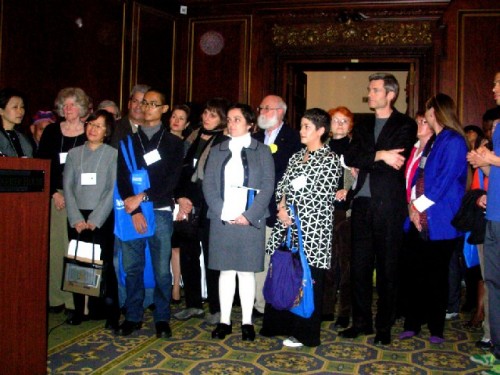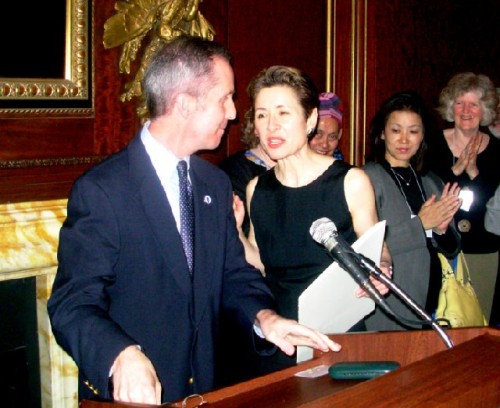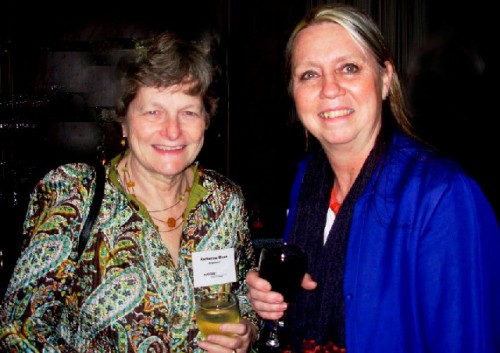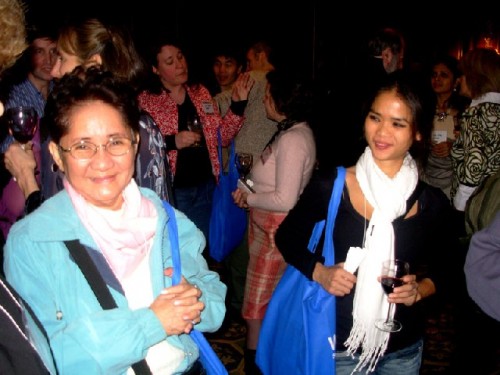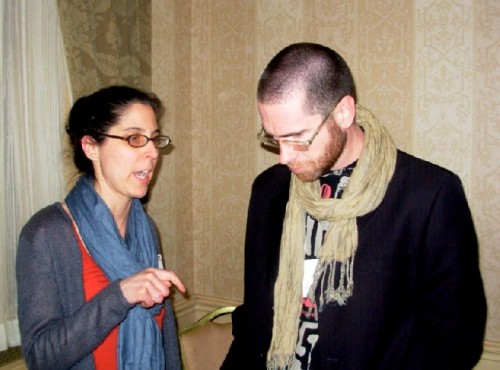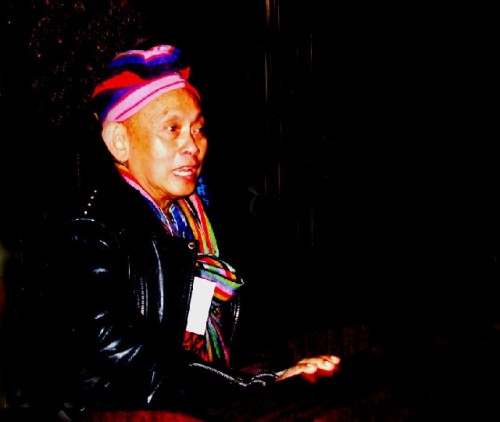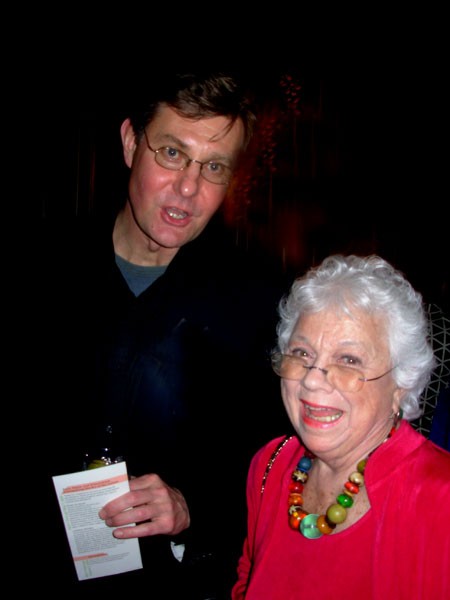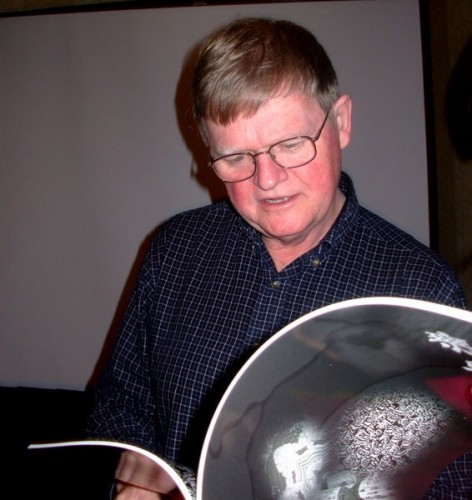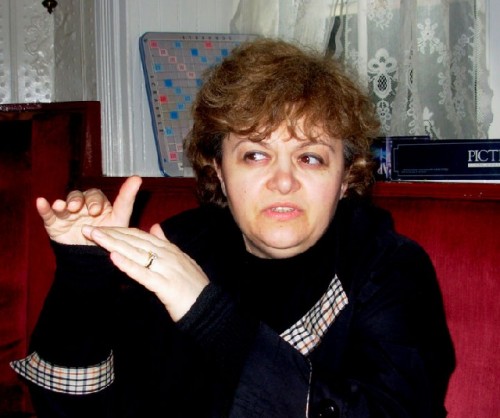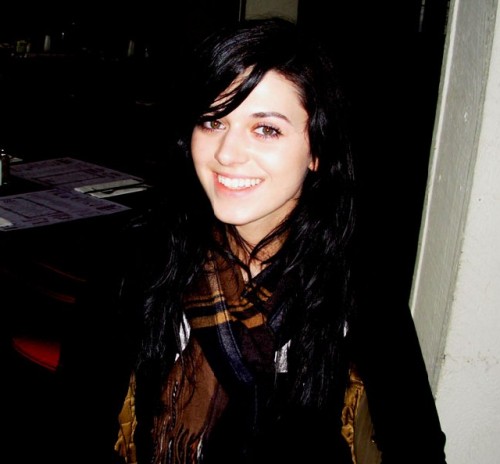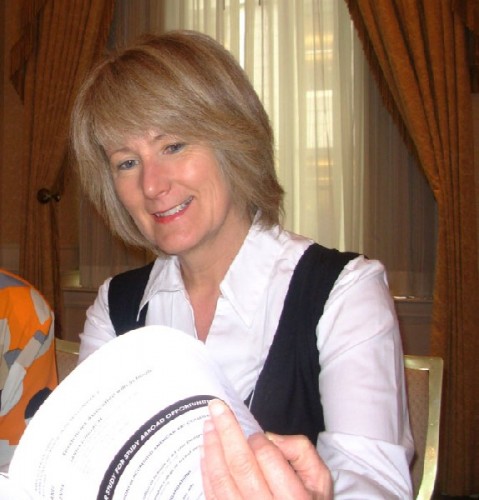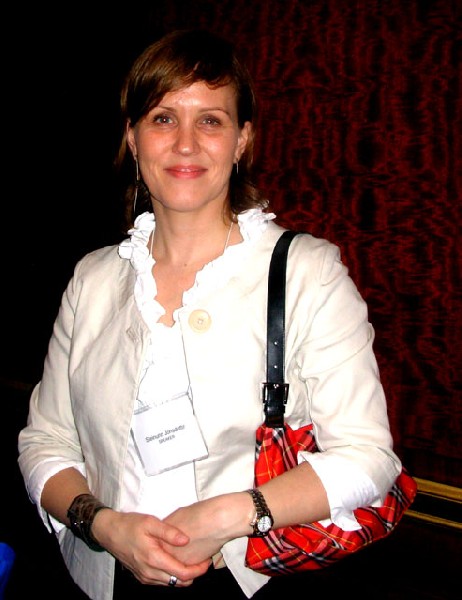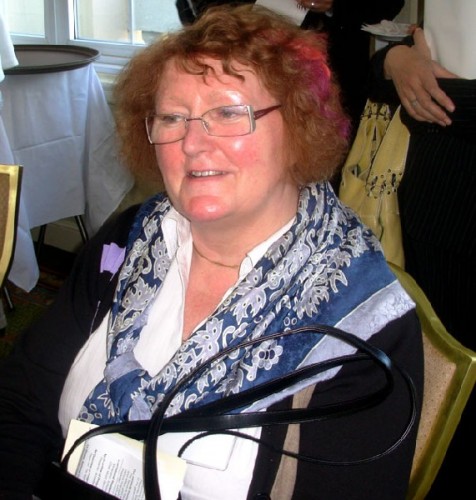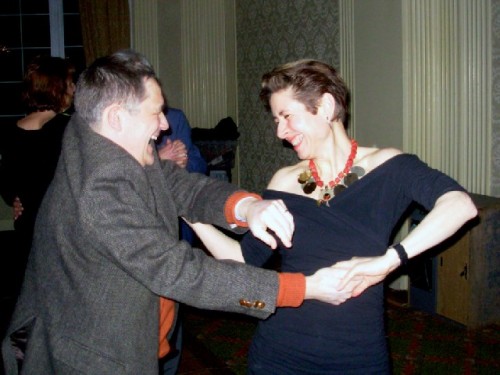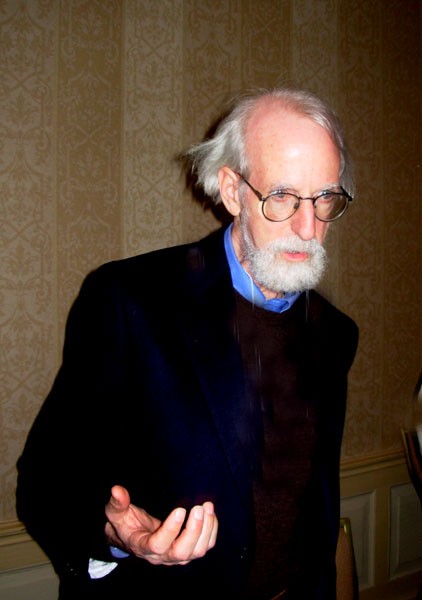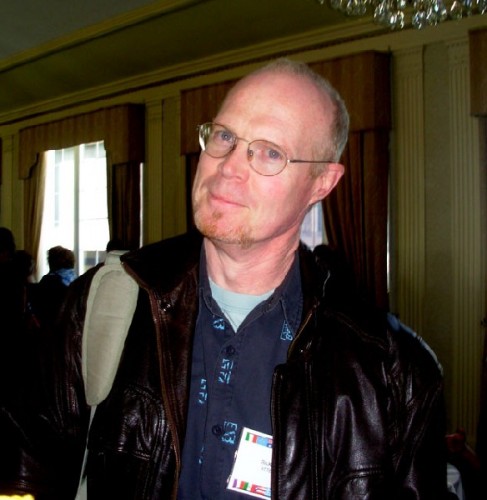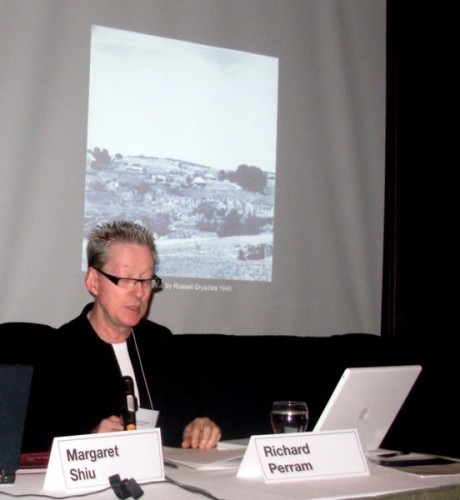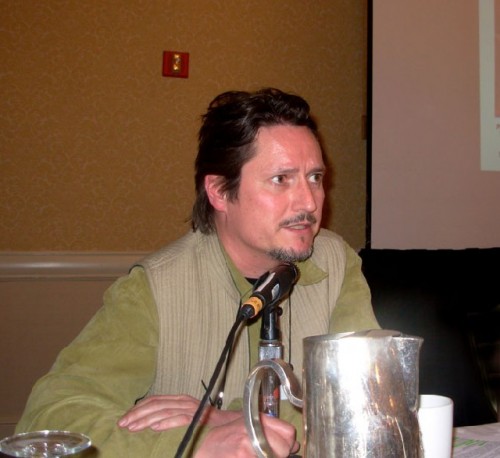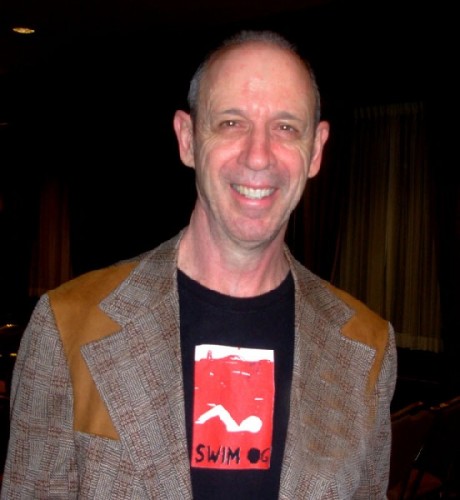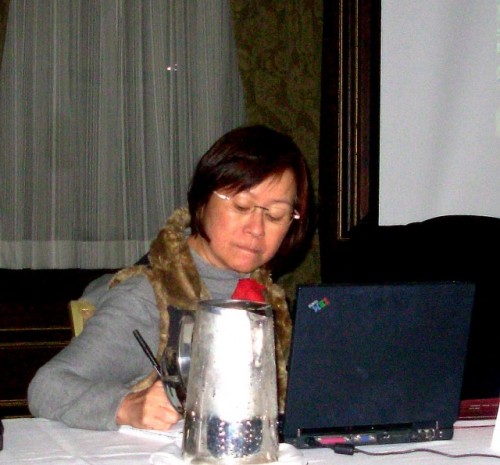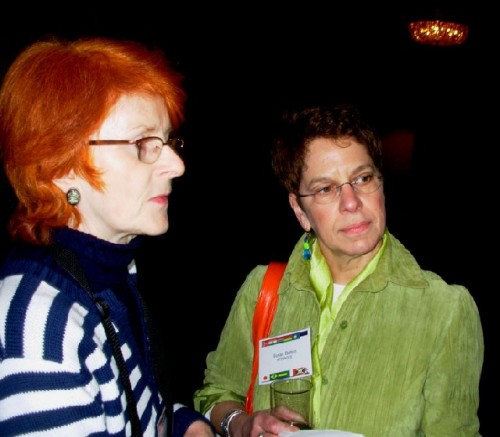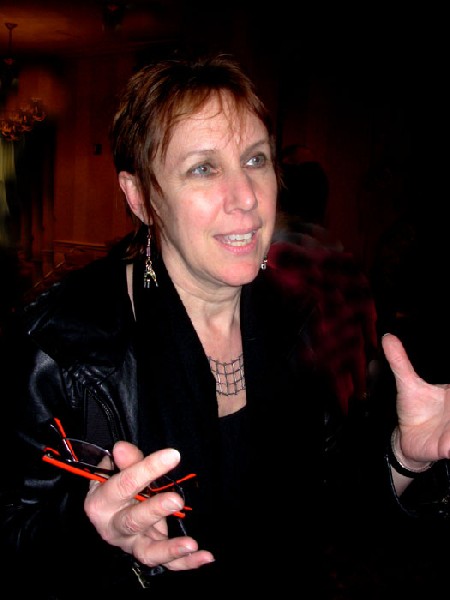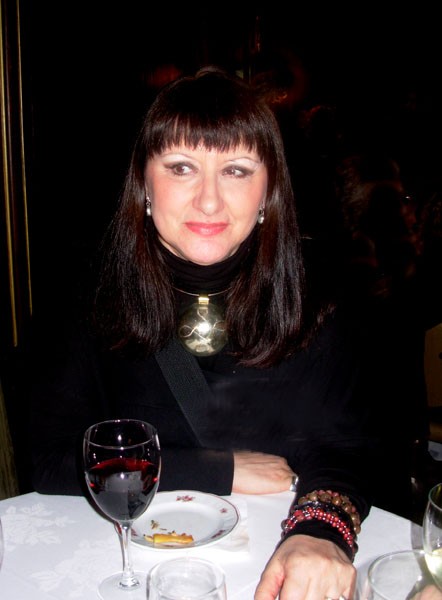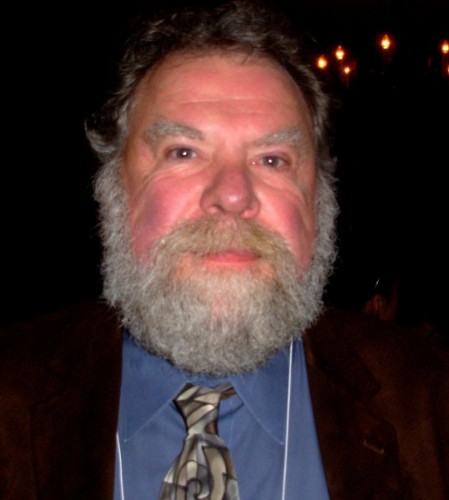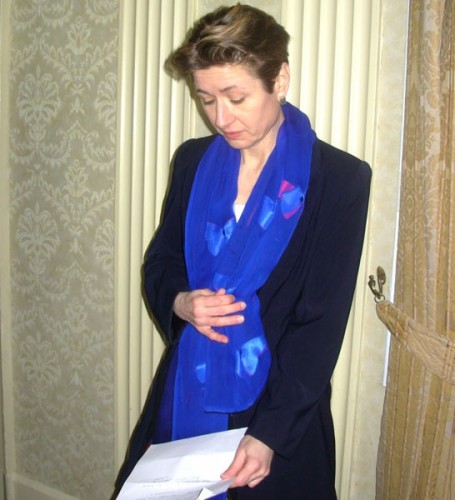2009 Conference International Opportunities for Artists
TransCultural Exchange Hosts Second Boston Event
By: Charles Giuliano - Apr 08, 2009
The consensus, by an informal word of mouth survey, was that the 2009 Conference International Opportunities for Artists, presented by the international organization, TransCultural Exchange, was a great success. For those who attended the first conference, in 2007, as well as this one, held from Friday, April 3 through Sunday, April 5, the general conclusion was one of great improvement. The most significant upgrade was an expensive, but necessary decision to concentrate all of the panels and events in one location; The Omni Parker House, in downtown Boston.
For the 2007 conferences events were spread out over the campuses of Massachusetts College of Art, Northeastern University, and MIT. Because the spaces were for the most part donated this was cost effective but the several locations for multiple events during a tight schedule made it difficult to get from one panel to another. This time, with the concentration in one location, it was possible to navigate more efficiently.
With 25 sessions over three days, during some time slots as many as four or five running simultaneously, it is possible to report on only a sample of what was presented. This often entailed making careful decisions but also offered the option of leaving one session to catch a portion of another. Several we attended in their entirety while others were sampled. During lunch breaks, formal dinners, receptions, or just conversations in the corridors, there was a lively exchange of information and critical commentary.
The task of organizing the conference was largely through the effort of the artist and entrepreneur, Mary Sherman the director of TransCultural Exchange. It has been an exhausting two year effort to raise funds and find sponsors; particularly in a time of financial challenge. Already, Sherman has announced plans for a conference in 2011. Based on feedback forms and word of mouth she intends to make some changes particularly in creating more sessions that deal with issues and critical dialogue. Both conferences have focused on presentations of artist residence programs. Now that this information has been conveyed just how to assure that those attending these two conferences will return again? Particularly, if much of the primary information and networking has been well established. The presentation of residence opportunities and networking will remain a focus but there needs to be development of other agendas to keep the conference vital and ongoing.
Last night, Mary called to discuss the conference and e mailed some statistical information. One comment among those attending was the cost of the conference and how to make it more affordable to artists and students. Sherman responded that scholarships were offered but there were relatively few who applied. Unless prodded by their professors students tend to be apathetic regarding opportunities beyond the classroom. Because of cost factors there was less than desirable attendance by emerging artists.
Quoting from her e mail Sherman stated that "Total attendance 364, off 50 from last time. Registrants 292 (including moderators, etc.). Speakers 70. Mentoring sessions over 250." The lunch session was sold out as were the mentoring sessions. The gala with dinner and dancing was well attended in the hotel ballroom. These are well supported add on options in addition to the cost of general registration.
During many of the sessions and receptions when international speakers and delegates were introduced they commented that "I am here because I'm a friend of Mary Sherman." Truly she is a woman of remarkable vision and energy. But in discussing the current state of the art world, with a proliferation of the market, art fairs, and some 200 global biennials, with the subsequent collapse of this infrastructure, we agree that there need to be paradigm shifts. As she put it "Â…the 19th century notion of a gallery owner taking care of you is overÂ…"
The conference offered an opportunity to sample the many and varied residence programs, the opportunities for artists, as well as to reflect on the impact of what is often a very grass roots,and personal aspect of globalization. Just what are the advantages of visiting, often at significant personal expense for air travel, a remote area of what may be a Second or Third World country?
There were also presentations of well established, highly competitive, mainstream residence programs. Check out the superb resources of McColl Center for Visual Art in Charlotte, North Carolina. Or the opportunity to work in the factory with professional equipment and technical support offered by the Kohler Foundation in Wisconsin. Perhaps it is more obvious why one would want to spend a month or semester on sabbatical in London, Rome or Paris, but less so to visit a farm in Finland, villages in Iceland and Ireland, or a converted chicken coop in Taiwan. Closer to home, Jay Critchley discussed why would one spend two weeks in a Provincetown Dune Shack? Just how do these experiences enrich one's creativity or advance careers as artists?
The opposite approach to these questions is to probe the motivation of the presenters of the residence programs. Just what are their expectations? Are there fees for food, studio and lodging? Is one expected to donate work? What kind of teaching or mentoring is involved? Are there opportunities to travel and meet artists, curators and critics? Are materials provided or available for purchase? What about issues of security particularly in Third World countries with high crime rates? What about creature comfort?. Presenters informed the audience that you might run into bears at the Anderson Ranch Arts Center in the Rocky Mountains, poisonous snakes in New South Wales, or mice in the Provincetown dune shacks. Yes, you may be offered a room during a residence in Indonesia but might arrive to find that you have a dozen roommates. In Turkey or India the bathroom and bathing facilities are not what you are used to.
The point that was conveyed repeatedly was to thoroughly research a residence program before applying. It is best to investigate websites and view images of facilities. Check maps and see were the residence is located. Know what you are getting into rather than be surprised or disappointed when you arrive there. It is a matter of finding the right fit. Just what are your hopes and expectations?
During the period for questions at the end of sessions there was a sameness that developed. Too often we heard artists ask "how do I apply" and basically "what are you offering me?" "Do you offer transportation, a stipend and living expenses?" There was too little discussion of "what are your exceptions and how would I be a good fit for your program?" Again this entails rethinking the notion of going some place where I will be taken care of. The challenge is for artists to be more proactive and entrepreneurial. Instead of finding that blue chip gallery, there are fewer and fewer surviving in this dismal economy, artists must invest in their own careers.
Participating in international residences and networking leads to ever expanding opportunities. We have to create our own momentum. Being out and about exposes us to ideas that in turn inform and energize our work. It leads to making new work and showing it to wider audiences. The comment was made repeatedly that residences really changed the work. These are ideas that are frequently brought back to classrooms and studios. One tends to look askance at professors who don't travel and network. Too often the teaching gets tired and inbred as professors convey to students what they learned in graduate school. Ten years after an M.F.A. program there is an entirely different set of aesthetic mandates. How to keep it fresh and vital if you are only reading issues in Art Forum?
Another stream of information that emerged from attending sessions was how personal and site specific were many of the residence programs. Remarkably, many started with dramatic locations that called out for the presence of artists.
My former student, Steinunn Jonsdottir purchased a run down farm on the spectacular coast of Northwest Iceland. A trained architect she designed and constructed several buildings and studios on what is a functioning ranch that breeds Icelandic horses. Out of this has developed the Baer Art Center in Hofos. She is looking for a mix of artists and architects in what is currently a small summer program with two, month long sessions.
The incredible rock formations on the coast of Ireland inspired Mary Hawkes-Greene to covert a castle and build the Burren College of Art Nearby one may visit castle of the poet William Butler Yeats . Margaret Shiu Tan transformed a chicken farm into Bamboo Curtain Studio in Taipei Country, Taiwan. Dorothea Fleiss invites artists for a residence in a castle in Romania. Her mother helps with the cooking and she described having as many as 75 artists for dinner. Many of these smaller residence programs reach into the pockets of their founders. Often these are labors of love with enormous sweat equity.
Many residence programs are highly competitive. The presenters discussed efforts to create diversity. Often they seek a mix between emerging, mid career, and established artists. In general, far more emerging artists apply and it is less competitive for mid career artists. Also, there is an effort for geographic diversity. This means more competition for American applicants. On the other hand, Richard Perram, discussing the Hill End Artist in Residence Program, in Bathurst, New South Wales, Australia stated that he could easily fill the slots with Australians but makes every effort to recruit internationally. Of course, consider that it's an expensive 20 hour plane ride to get there. And, there are those snakes and kangaroos to encounter, but based on his presentation, it seemed like an exciting and enticing destination and program.
There were also programs that just invite artists to come. We much enjoyed the warmth and candor of Riitta Tarvainen who founded the Hovinkartano Art Exhibition and Residence on her family farm in Hauho, Finland. She stated that she is not herself an artist but that she and her husband enjoy the company of artists. There is no need for an application just let her know that you plan to come. The location is simple, with spectacular landscape, about an hour and a half from Helsinki.
Ellen Schon, the clay studio supervisor for the Art Institute of Boston, shared her experience of visiting Tarvainen's farm last summer. "I was one of 16 international artists and it was wonderful. From that networking I am invited to visit Croatia this summer."
This seems to be the norm as one residence and its networking leads to another. Because this involves making work and collaborations it is a different strategy than attending art fairs and biennials which are more focused on collectors, curators and critics. But a number of the residence programs, such as Bamboo Curtain, encourage visits by critics and curators. Margaret Shiu discussed how visiting with her in Taiwan was an effective way of networking with artists and programs in Asia. She sees her mandate as sharing that information. Many of the destinations are so small, underfunded, and local that they are impossible to research over the internet.
In, at times, excruciating detail Michael Sheridan discussed the challenges and rewards of visiting Indonesia. For openers, they don't respond to e mail. You more or less have to show up. But in an elaborate power point presentation he had a lot of contact information and tips. He offered print outs of his notes and is reachable by e mail. One issue involved the complexities of obtaining more than a one month visa. There are also matters of congestion, traffic, pollution and sanitation. So Indonesia is not for the faint of heart but the experience is remarkable. Sheridan is a documentary filmmaker who speaks of Indonesia with wit, insight and passion. It was an absorbing and compelling presentation.
We attended a session that had an activist agenda. The notion is the artist as an ambassador and catalyst for change. The mandate is not just to go somewhere but to do something than makes a difference for society and the environment. Todd Lester presented on free Dimensional which links artists to international social justice. Laurel Braitman, a Doctoral candidate at the Center for Advanced Visual Studies at MIT, discussed a program that she initiated Artists Respond to a Changing Planet. In hindsight she never realized the immensity of the undertaking. Mohamed Abou El Naga discussed a paper making project El Nafeza Foundation in Egypt as a means of employing women. He invites artists to come and work with him on this ongoing project. There was a lively discussion during this session with interesting questions and exchanges with Ted Levin who works with the Soros and Aga Khan foundations. He is a musician, professor at Dartmouth College, and a founder with Yo Yo Ma of the The Silk Road Project.
The kind of dialogue and charged emotional interactions to the Art and Social Economic Transformation session offered promise for expansion in the 2011 conference. We joined it late after leaving yet another inept power point presentation of, ho hum, a commercial building transformed for studio and residence programming. While Power Point may provide some bullets for the audience it becomes tedious when the presnter just parrots what we read on the screen. Is it a resource for the audience or a teleprompter for the presenter?
By then it was late on Sunday afternoon and we, perhaps like other artists, were full of pent up energy and frustration. Attendees, Kathy Bitetti, of the Boston based, Artists Foundation, and the activist artist, Rick Berry, vented on the issues of the need for artists to lobby politicians about issues like affordable housing, health care, and protection of artists' rights. There were passionate appeals for artists to overcome their complacency. Hopefully, there will be more such dialogue in the programming of the next conference. In addition to Opportunities we need to discuss Ideas and Strategies. Bottom line we have to be Entrepreneurial and make our own Opportunities.
This is the first of several reports on the conference. The session on Biennials will be discussed in detail. Astrid Hiemer will write on individual residence programs.

